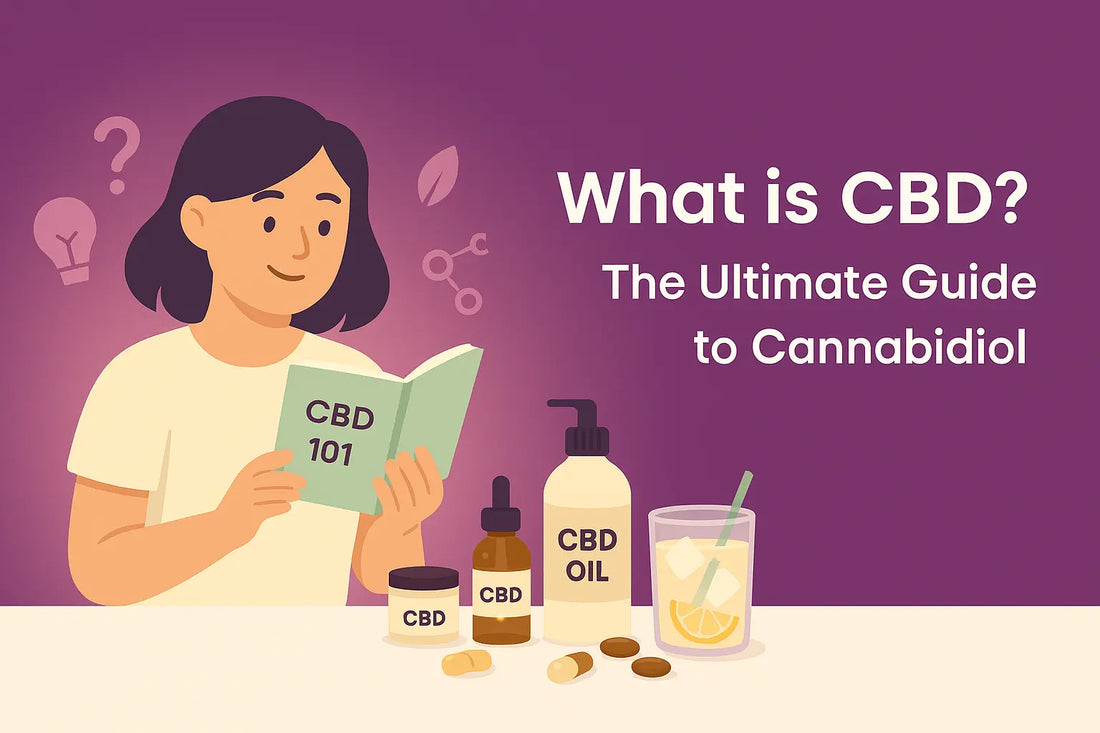
What is CBD? Beginner’s Guide to Cannabidiol
Cenk CetinShare
Introduction
Cannabidiol, or CBD, gained popularity in recent years, specifically when there was a change of attitude towards the substance within Thailand, and has been recognized for its potential health benefits and versatility ever since. From alleviating stress and anxiety to aiding in pain relief, CBD is being explored in various forms, from oils to edibles and topicals. But with so much information circulating, it can be overwhelming to understand what exactly CBD is, how it works, and how to incorporate it into your wellness routine. This comprehensive guide will walk you through everything you need to know about CBD, including its benefits, uses, and more.
Key Takeaways
- CBD is a compound found in hemp and non-hemp plants.
- Unlike THC, CBD does not cause a euphoric feeling.
- CBD is known widely as a wellness ingredient.
- You can consume CBD through methods such as sublingual, smoke inhalation, oral ingestion, or topical and skin applications.
- CBD products come in many forms such as edibles, drinks, oils, balms, and patches.
- Medically, CBD can help with pain and inflammation, anxiety, sleep, seizures, and cancer.
- CBD products can be purchased legally in Thailand.
- Ethanol and supercritical CO2 extraction are the two most effective methods to extract CBD products.
What is CBD?
Cannabidiol, generally known as CBD, is a chemical compound derived from hemp and non-hemp plants. Hemp is used to define any part of cannabis plants with no more than 0.3% tetrahydrocannabinol (THC), which is what causes consumers to get high. However, CBD is not impairing, meaning it does not cause a “high”.
Now you might wonder ‘What exactly does CBD do?’ It may activate or block cannabinoid receptors CB1 and CB2, which are part of the body’s endocannabinoid system and regulate many processes such as sleep, mood, and appetite. CBD may also interact with specific serotonin receptors, stimulating a process that can decrease cholesterol and blood sugar levels.
CBD vs THC: Key Differences
Both cannabidiol (CBD) and tetrahydrocannabinol (THC) can be found in cannabis plants, however, they interact differently with your body. They both interact with the body’s endocannabinoid system, but they offer different effects. The similarity of these two compounds is that they both are available in the same form of products which can be oils, edibles, tinctures, capsules, and more.
The main difference between CBD and THC is that THC is the main psychoactive compound in cannabis that produces a “high” sensation and CBD does not cause you to feel high. However, that does not mean CBD isn’t psychoactive, it is psychoactive but just not in the same manner as THC. THC is psychoactive and causes a high feeling or a sense of euphoria by binding with the cannabinoid 1 (CB1) receptors in the brain. CBD is more widely known as a “wellness ingredient” to cure common ailments and for pain relief.
What are the Consumption Methods of CBD and Its Product Types?
CBD is available in several different forms which allows you to tailor your enjoyable moment to consume weed to match your specific needs. Types of CBD products are similar in their consumption methods and there are four main types including:
- Sublingual
Sublingual is a type of CBD product that you use by placing CBD oils or alcohol-based extracts like tinctures under the tongue with a dropper.
- Smoke or vapor inhalation
Inhalation is a consumption method by absorbing compounds directly from your lungs into the bloodstream by smoking CBD-dominant cannabis strains or vaping CBD oils. However, these methods link to more severe side effects and long-term health issues such as lung injury.
- Oral ingestion
Oral ingestion refers to the consumption method by which you swallow CBD products, including:
- CBD edibles like gummies, chocolates, and other candies
- CBD-infused beverages
- Capsules and chewable tablets
- Lozenges
CBD gummies and other edibles are the most popular consumption method to take CBD, while CBD-infused drinks are absorbable more quickly than edibles. However, the effects of CBD drinks are short-lived compared to the CBD edibles, which may take approximately 1 to 2 hours to feel the effects and typically last for several hours.
- Topical and skin application
CBD topical and transdermal products are CBD-infused products that you use to apply directly to your skin which include:
- Balms
- Creams
- Lotions
- Oils
- Ointments
- Patches
- Salves
These CBD topicals are for targeted pain relief caused by symptoms of muscle and joint pain, while these products may also soothe the symptoms of skin conditions like eczema and psoriasis. On the other hand, transdermal CBD products penetrate the skin barrier to reach the bloodstream which promotes more widespread or systemic relief.
Benefits of CBD
Pain and Inflammatory Relief
Many studies have found that CBD may help manage certain health conditions, particularly mental health and physical conditions. A 2015 study has shown an effective result of CBD oil to help treat pain associated with arthritis in rats, while another study from 2014 has shown that CBD cream on human cells was effective in anti-inflammatory.
Anxiety
The result of using CBD-based products with medical cannabis patients for anxiety disorders has shown a mixed outcome. In a retrospective study, the result showed that after 2 months of CBD treatments, about 78.1% to 79.2% of participants reported improvements in anxiety symptoms, while about 15.3% to 19.5% of other participants developed worse symptoms. A group of researchers in the 2020 article also found evidence of CBD use as an effective monotherapy or complementary therapy for treating generalized anxiety, seasonal affective disorders (SAD), and post-traumatic stress disorder (PTSD).
Sleep Disorders
Here’s where it gets tricky. Some clinical studies show that CBD does help improve sleep quality as cannabinoids help people fall asleep faster and stay asleep throughout the night. However, many participants in the studies also had other health problems such as multiple sclerosis, post-traumatic stress disorder (PTSD), or chronic pain. Therefore, researchers are not yet clear if CBD helps with sleep directly, or if it just helps ease symptoms from other health conditions like anxiety and pain. However, many clinical studies of CBD and sleep disorders suggest positive outcomes, but not everyone experiences the same sleep benefits with the use of CBD and additional research is still needed to deepen the understanding of CBD as an intervention for sleep disorders.
Seizure Disorders
CBD may help treat certain types of childhood epilepsy and other seizure disorders. In 2018, the first FDA-approved cannabidiol drug known as “Epidiolex” was released on the market as a treatment for two rare types of epilepsy, Dravet syndrome and Lennox-Gastaut syndrome. This FDA-approved medicine showed the effectiveness of reducing the frequency of seizures. While research still does not provide sufficient definitive answers about how CBD can help prevent seizures, it is believed that CBD interacts with the endocannabinoid system in the body which influences bodily functions and systems including immune response, appetite, pain, and sleep.
Anti-cancer
What we know so far is that many pre-clinical, in-vitro, and in-vivo studies suggest cannabinoids, including CBD and THC, carry anti-cancer properties in a wide range of cancer types which include playing a significant role in cancer cell death and blocking cancer cell growth. Additionally, CBD can affect the tumor environment by stopping the development of blood cells that feed the cancer, preventing the spread, and reducing inflammation. At the same time, some pieces of evidence point out that CBD provides benefits in managing cancer treatment side effects such as nausea, vomiting, and appetite loss.
Read 10 potential benefits of CBD here.
CBD Products in the Thai Market
According to Statista, Thailand’s CBD products market is rapidly growing, driven by the change of laws and regulations towards the use of cannabinoids, sparking interest in many manufacturers and resulting in the growth of consumers seeking alternative wellness solutions. The manufacturers tend to offer diversification of product offerings, from CBD oils and tinctures to skincare products and edibles is one of the key trends in Thailand’s CBD products market to match a wider range of consumer preferences.
Legal Status of CBD in Thailand
Even though Thailand is one of the countries in Asia with the harshest penalties and punishments when it comes to drugs, you may be surprised (or not anymore) that Thailand’s stance towards CBD has changed. CBD products are now legal and available here in the Land of Smile. According to the Ministry of Public Health, CBD oils, and other CBD-infused products can be legally purchased in natural health and alternative medicine stores.
They also issued three key directives to regulate the use of cannabidiol (CBD) in food items to ensure a commitment to consumer safety and ensure clear usage guidelines for CBD in Thailand’s food industry. Firstly, CBD-infused food products require mandatory clear labeling of food products containing cannabis, hemp, or both – ensuring transparency and allowing consumers to acknowledge informed ingredient choices of the product they are purchasing. The permissible levels of food items containing CBD products in Thailand including condiments are capped at 0.0028% and a maximum of THC, while other food products have restrictions of 1.6 grams for THC and 1.41 grams for CBD per item. Additionally, labels must contain caution against cannabis or hemp overconsumption, as well as providing other vital information.
The second regulation of CBD in Thailand’s food industry expands the legal concentration of CBD allowed in hemp seed oil – meaning that the maximum amount of CBD that can be discovered in hemp seed oil is increased. The third directive authorized the use of CBD alongside other food ingredients that are safe for human consumption.
How CBD is Extracted and Produced
CBD is the compound contained in cannabis plants, of course, it is extracted from the hemp plant which is a variation of the cannabis plant known for its low THC content, or cannabis plants with high CBD concentrate strain. To be more specific, the flowers are used for the extraction process.
Methods of CBD Extraction
There are several different ways to extract cannabidiol such as olive oil extraction, steam distillation, or hydrocarbon extraction. However, these methods do not guarantee you a high-quality product and could also result in toxic residue. The top two extraction methods preferred by CBD manufacturers are ethanol extraction and supercritical CO2 extraction, to retain quality control of the products, and both CBD extraction methods are safe and commonly used in the food industry. Let’s break down these two popular extraction methods:
- Ethanol Extraction Method
While being widely used in a variety of food-grade products such as nutritional extracts, beer, wine, and whipping cream, ethanol is also a natural solvent and the key ingredient in this CBD extraction form, particularly for CBD oils and gummies. This process produces the natural taste of CBD oil which can offer an appealing looking and great tasting oil.
The following steps are how ethanol extraction works:
-
Ethanol Soak: The process starts by fully submerging the cannabis plant material in an ethanol; solution.
-
Filtration: After the plant has been completely soaked in ethanol, the solid plant material will be filtered out and removed.
-
Cold Factor: The ethanol is in a super cold temperature which is approximately -40°C or below to ensure that fats and lipids are removed from the hemp extract. Without the extremely cold temperature ethanol, it will result in an extract noticeably less pure and effective.
- Ethanol Evaporation: In the final step of this CBD extraction method, almost all of the ethanol is removed, leaving only traces of ethanol in most CBD extract's final products.
-
Supercritical CO2 Extraction Method
This type of extraction offers a clean, safe, environmentally friendly, and has been around for decades. CO2 extractions are also applied to extract hops to make beer. In addition, the process may yield a stronger or more potent CBD or cannabis extraction, making it ideal for those who are interested in full-spectrum products.
Here is how the process of CO2 extraction works:
-
Pressurization: At the beginning of the process, the CBD is placed into a pressurized container where the carbon dioxide is pumped into the extraction chamber, resulting in the extraction of desired photochemicals from the plant.
-
Separation: The CO2 extraction process separates individual compounds in the cannabis plant during the extraction which eliminates the need for additional purification.
- Condensation: After the extraction process is completed, the CO2 will be condensed into a liquid form and may be reused for further processing in the future.
In Summary
CBD has gained popularity for its potential therapeutic properties. Unlike THC, CBD is non-intoxicating and works by interfering with the body’s endocannabinoid system which influences mood, sleep, appetite, and more. Available in forms such as oils, edibles, topicals, and vapes, CBD offers flexibility in consumption to suit various needs. Its benefits include pain relief, anxiety reduction, improved sleep, and potential anti-inflammatory and anti-cancer properties. In Thailand, CBD products are legally accessible, with regulations ensuring safe usage and clear labeling. There are two most effective extraction methods for CBD products including ethanol and supercritical CO2 processes.
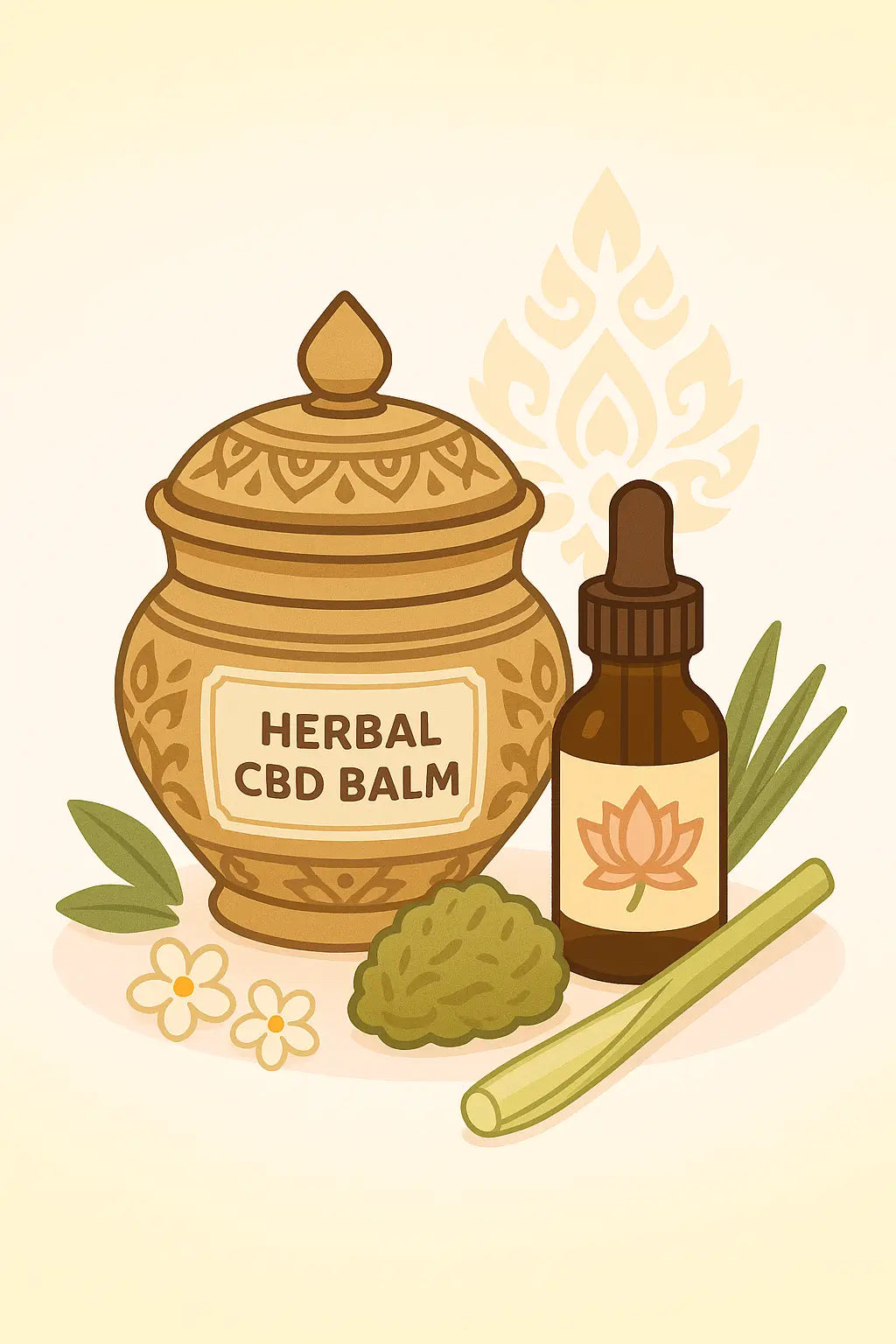

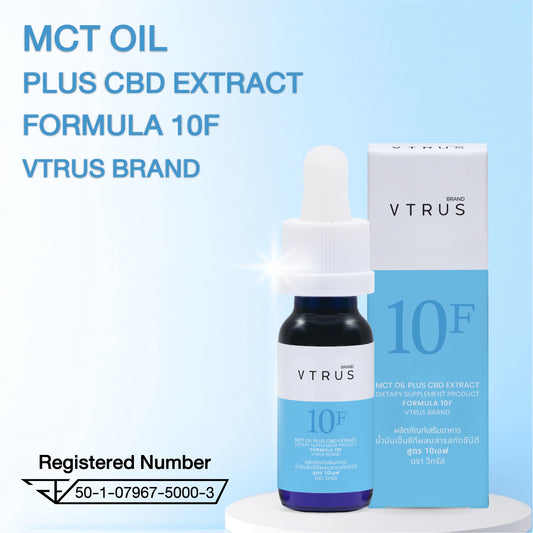
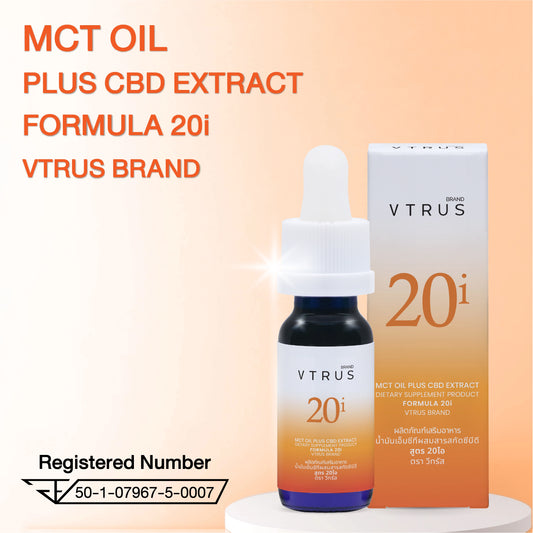
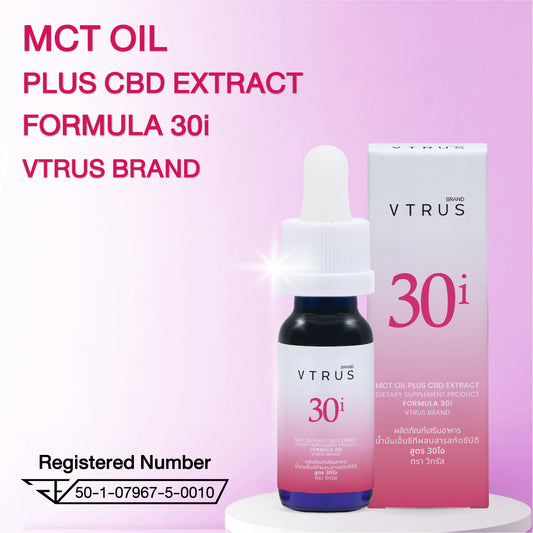

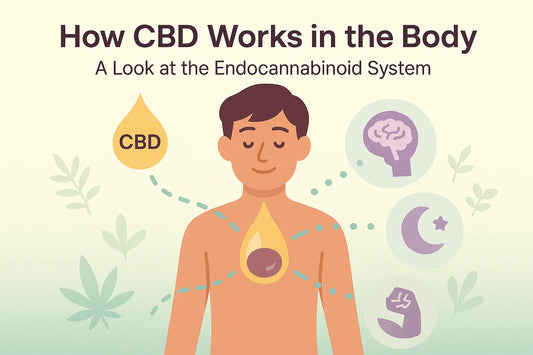
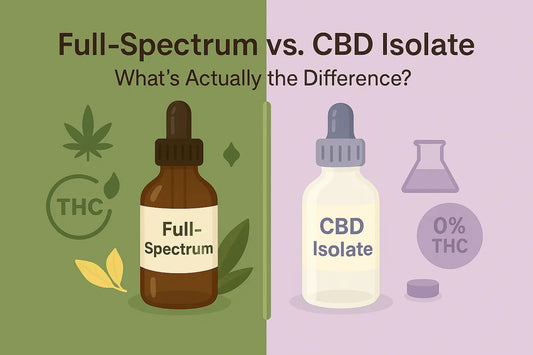
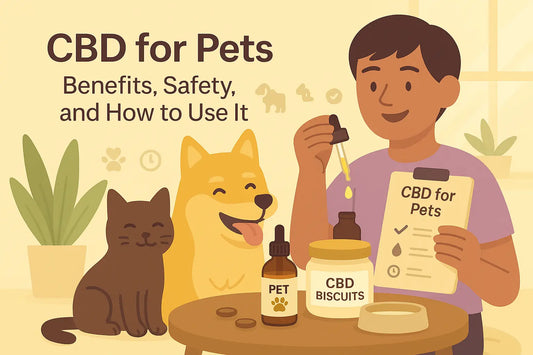
1 comment
That’s a solid beginner’s guide — it breaks down what CBD is and how it might work in a really clear way.
If you’re considering giving it a try, you might want to check out CBD Flowers UK [https://gethemp.co.uk](https://gethemp.co.uk).